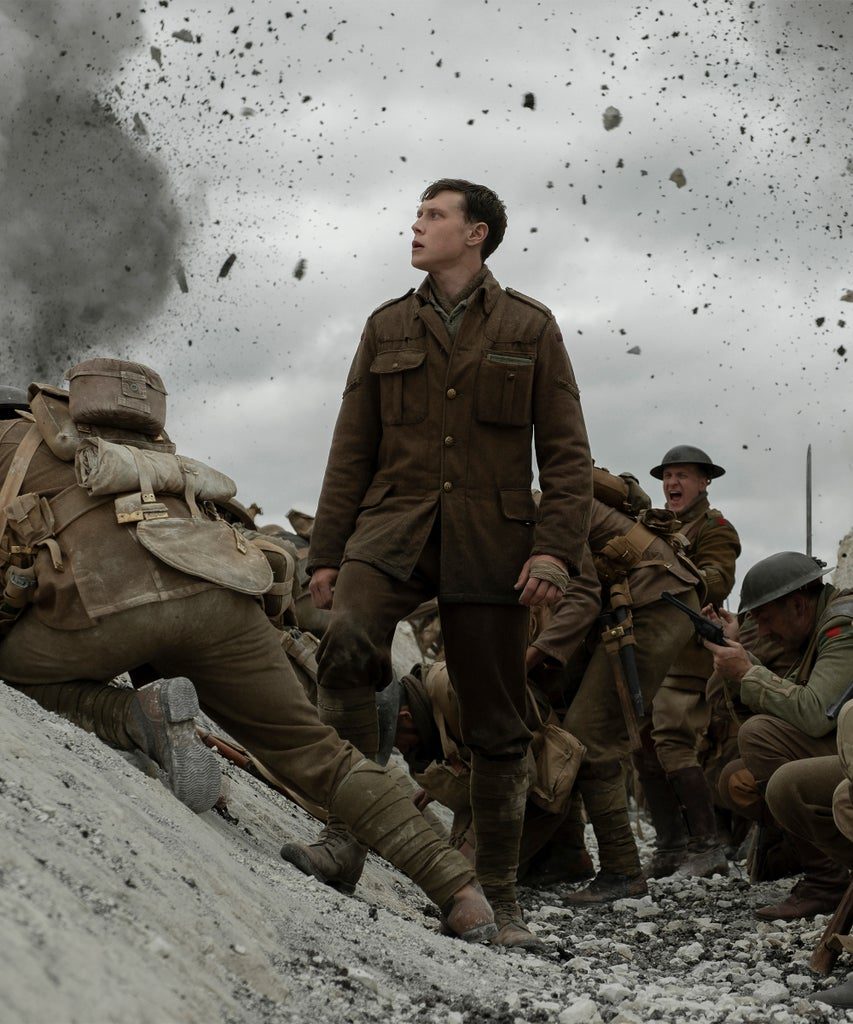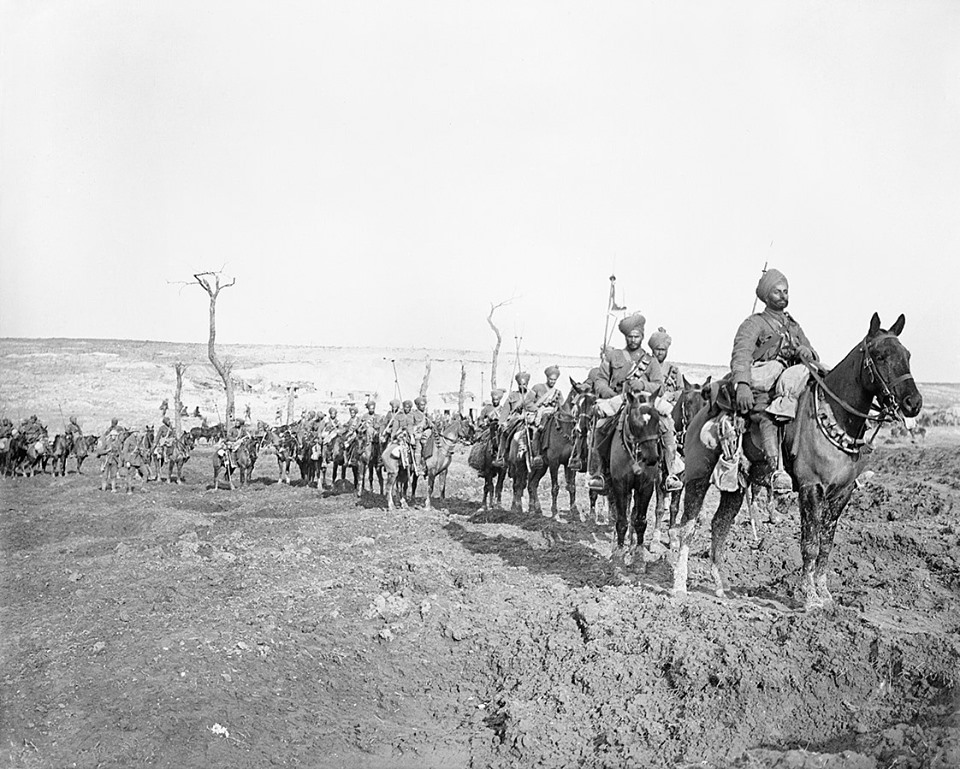Mr. Mendes’ War: Film Review, ‘1917’
“You have to construct a journey for the camera that’s every bit as interesting as the journey of the actor. What I wanted was one ribbon, like a snake, moving forward, in which the information that you needed happened to fall in front of where the camera was pointing.”
-Sam Mendes
It is a glorious thing to live in an age that is learning to remember the Great War.
Once the Centennial passed, I started to worry that WWI would fade back into obscurity.
There would be nothing more to it than the occasional badly-produced documentary, rehashing all the basic facts. Or the once-a-decade feature film composed primarily of maudlin melodrama and scenery-chewing. Great War geeks would be reduced, finally, to re-reading what little their local library has on the subject (invariably, a shelf or two perched on the edge of the vast glacier of paper that is EVERY BOOK ABOUT WWII EVER PUBLISHED, which even the most modest county library is guaranteed to have).
We’d keep on of course, as we have for decades, finding solitary joy in studying the minutiae of this defining moment of the 20th Century, only telegraphing our interests by posting Siegfried Sassoon’s “Survivors” on social media every Armistice Day. We know how to live like this.
And it may yet come to that again, in ten years or so. But for now, the Great War retains a prominent place in scholarship and the public eye. Peter Jackson’s They Shall Not Grow Old (see my review for WBT last year) was the first great post-Centennial media event, generating accolades, controversy and awards, and proving so popular it was re-released in theaters twice in one year.
Sam Mendes’ masterful 1917 carries on this legacy, and in my honest and no doubt potentially unpopular opinion, surpasses Jackson’s film in almost every way. I know, we’re talking about two fairly dissimilar things here. The statement stands. 1917 evokes the character of the Great War, it contains the soul of the War, and it conveys these ideas to the audience in a way that documentary cannot do. In short, were you forced to show someone who had never heard of the Great War only one film that evoked the nature of the War, you would choose 1917 over They Shall Not Grow Old.
For one thing, it is shorter; for another, it is much more compelling; finally, it is free from the glaring flaws of Jackson’s film. They Shall Not Grow Old suffers from low-key jingoism and Jackson’s bizarre visual insistence on depicting only white British infantrymen (it turns out there were other people there).
1917 is the WWI movie I’ve been waiting for my whole life.
Yet after I saw it, and then read more than a few reviews of 1917, I was left with one major question:
What movie did y’all see?
Because the 1917 I’ve encountered in the criticism is not in any sense the film that I watched.
For example, Manohla Dargis writing for the NYT describes a film containing “next to no history” and refers to the entire piece as “a carefully organized and sanitized war picture from Sam Mendes that turns one of the most catastrophic episodes in modern times into an exercise in preening showmanship.”
Justin Chang on Fresh Air was generally more positive, but like many other reviewers spent ages decrying the film’s technical skill. (If you’re somehow unaware, the major conceit of Mendes’ film is its use of a simulated single tracking shot, actually achieved through a variety of cinematic tricks—if you’re interested you can see exactly how it was done on YouTube.) In fact, the most persistent line of bitching about this movie has been that it’s “too perfect”, with the NYT reviewer even throwing out an offhand line about the movie spending too much time on getting the buttons on the uniforms right.
To which I have to respond: have you ever MET a Great War geek? Get the buttons wrong on the uniforms and you will quite literally never hear the end of it on the Internet. And anyway, maybe I’m missing something here with this whole “sure, it’s technically magnificent, BUT” angle. People WANT it to be sloppy?
This film is the opposite of sloppy. This is theater, ready for any contingency. This is opera, or better yet a musical, with sets and costumes meticulously and obsessively constructed. This is in every sense a careful production. I’m really missing why this is a problem. With that said:
Sam Mendes gets this a lot.
Fifteen years ago, people said the same shit about Jarhead.
Fie on the critics (for now, anyway). If you haven’t seen this movie, you need to understand what it was really like to dive into it on the big screen. Because this film is beyond epic. It’s beyond “a good film”, beyond even the proverbial “good war film”—it is an experience.
It is immediate.
Overwhelming.
Shocking.
The success of this film lies in the concept of cinema-as-immersion. Toss the viewer straight into the milieu and drag them along, whether they will or no, through all the horror and the madness and the despair that was the soldier’s lot in 1917. Of course it doesn’t dwell on politics or slap you in the face with the grade-school primer on the whys and wherefores of alliances and Archdukes. There is, quite simply, no time for that.
The plot of the film centers on two Lance Corporals of the East Surrey Regiment, Blake and Schofield, played by Dean-Charles Chapman and George MacKay. Fans of Game of Thrones will recognize Chapman as an all-grown-up version of King Tommen Baratheon, First of His Name*.
*The fact of his starring role in this film prompted the following exchange. While we were on the way to the cinema, my wife said to me “Who’s directing this?”
ME: Sam Mendes.
MARY: What else has he done besides James Bond?
ME: American Beauty. Revolutionary Road. Jarhead.
MARY: Oh. Oh God.
ME: What?
MARY: I just got this incredibly clear picture of Tommen dancing around with a Santa hat on his junk, to a tinny clarinet-and-piano ‘20s jazz version of “O.P.P.”
ME: <inarticulate with laughter>
MARY (imitating Cab Calloway): Ya down with O.P.P? Yeah, you know me!
At that point I nearly wrecked the car.
I digress (but you laughed). Blake and Schofield are first seen on their backs in an unspoiled field, trying to get in one of the naps that soldiers everywhere can manage at the drop of any hat, when they’re interrupted and summoned back to HQ in the trenches. Along their way, they pass by any number of black British soldiers from the West Indies Regiment.
Jackson’s film made no acknowledgement whatsoever of the service these people made during the war. Mendes, whose Trinidadian grandfather was a messenger serving in much the same capacity as Blake or Schofield, is careful to honor the sacrifices of these brave people who served despite the racist and classist treatment they suffered while doing their duty. All of this is accomplished in the first five minutes.
Awaiting them is General Erinmore, portrayed by an extra-gruff-and-crusty Colin Firth. Our Heroes are informed that there is a mission of extreme importance that must be undertaken immediately; the German “retreat” to the Hindenburg Line has been revealed through aerial reconnaissance to be anything but, and their comrades in the 2nd under Colonel Mackenzie are walking into a deathtrap. Their orders to attack will ensure the deaths of 1600 men. As Blake’s brother is a lieutenant in the 2nd, Blake is chosen for this mission and entrusted with orders from General Erinmore to call off the attack, and as he is allowed to choose one man to go with him, of course he chooses his best mate Schofield.
These are literally the only moments of peace the film has until its end. From this moment forward, everything is propulsive, violent, and fast. Even the scenes of relative inaction are fraught, with the promise of calamity never further away than the next street or the next trench.
From here, the camera follows Blake and Schofield with all the obsession of a stalker. Through the use of wildly varying color palettes, Mendes carefully establishes “chapters” in the film. The British trenches they leave are orderly, earth-colored, dusty but tidy. Their entry into No Man’s Land, with its foul slurry of churned mud, discarded boots, and body parts, is clearly Chapter Two: a sudden break with the imagery seen before reveals a landscape riddled with the grey of rotting flesh, the brown of human shit, the occasional burst of gold or green to remind one that this was once a place where people lived with their families, farmed, tended their business.
The initial shots of No Man’s Land are strikingly reminiscent of Max Ernst’s Europe After the Rain II:
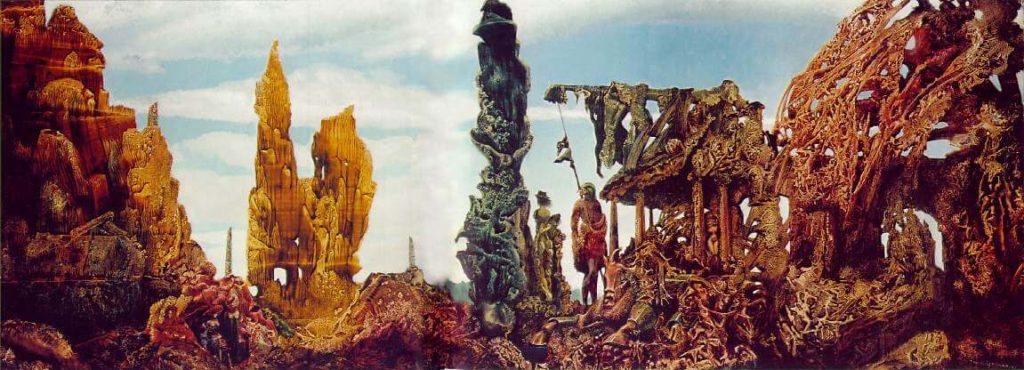
There is a moment of dark Great War humor when the two encounter Lieutenant Leslie (Andrew Scott, familiar to viewers of Sherlock as Moriarty) who lends them flare guns (“Throw them back when you’re done, we’re forever out of these”) and reminds them that on the way to their destination, they should “mind the bowing chap”. The Bowing Chap is revealed to be a decaying corpse suspended from barbed wire, a shoutout to the works of the inimitable Otto Dix, whose “Corpse on Barbed Wire” is one of the most memorable pieces of art from the War.
Further, a lingering shot on the corpses of two horses evokes the work of Dix, whose art provided an inspiration for Jackson’s They Shall Not Grow Old as well. “Horse Cadaver” is apparently every WWI movie director’s favorite; in both movies, the shots of dead and decaying horses are arranged precisely in the same aspect and POV as Dix’s picture.
Stomach-turning images of this kind can and should be employed by those who would make movies about war; 1917 pulls no punches here. During their dangerous sojourn in No Man’s Land and the German trenches, rats swarm everywhere and flies infest all surfaces, including inside a gaping wound on a corpse. Lance Corporal Schofield cuts his hand on barbed wire and then trips, firmly inserting his wounded fist into the bacteria-laden hole where rats were feasting not moments before. It is both disgusting and entirely realistic; the chief cause of death in every war before the First World War was from infectious disease, not combat. If one were feeling particularly apocalyptic, one could definitely argue that the number of people felled by the Spanish flu during and after the conflict showcases the continuing role of Pestilence following along in the wake of War.
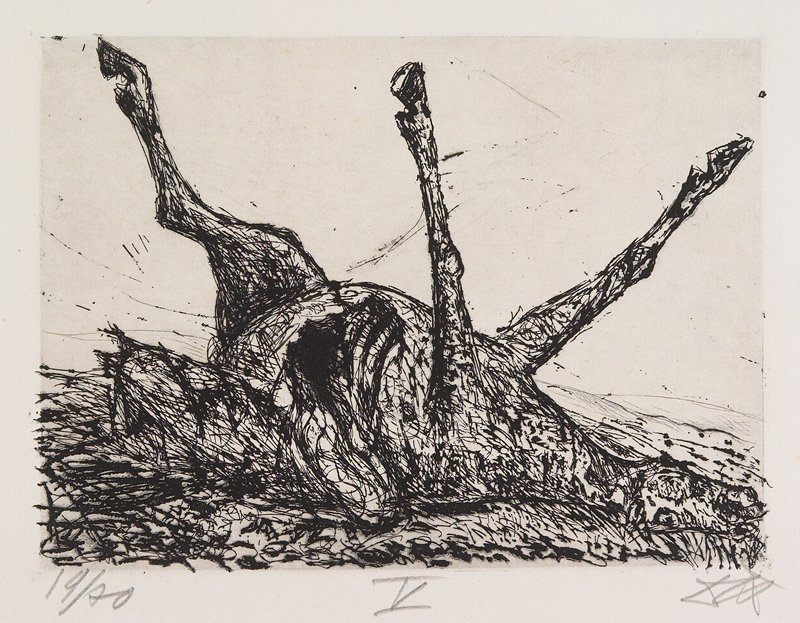
From the German trench (where Schofield is nearly killed, only saved by the valiant efforts of Blake) they proceed to a bombed-out French farmstead. Here the plot takes an unexpected turn, as the corporals observe a dogfight between the Boche and two English pilots, which ends with the German plane crashing mere yards from the broken-down barn where Blake and Schofield have taken shelter.
And it is now where things begin to go horribly awry.
The German fighter plane crashes and catches fire. The pilot screams for help. Blake and Schofield don’t wait for moral considerations or strategic concerns: they pull him from the wreckage as though he were their own comrade. He is burned and wounded, and Schofield suggest they employ the coup de grace, but Blake demurs.
Moments later, Blake is stabbed in the gut by the ungrateful recipient of his kindness.
Schofield shoots the German pilot over and over again, enraged at his perfidy, but Blake is mortally wounded. Schofield holds him as he dies, promising to write to his family back in Britain. “Don’t tell them I was scared,” Blake says, as he dies in agony.
From now on the story is Schofield’s. In service both to his comrades in the 2nd and his fallen companion, he will not be denied in his obsessive focus on the completion of The Quest.
The frenetic pace increases. Schofield manages to catch a ride further into German territory from a group of British soldiers on their way into the battle zone. Among them is a Sikh, a figure common in the British soldiery, but one whose presence in this film inspired ridiculous accusations of “forced diversity” by racist English actor Laurence Fox. To briefly address Fox’s “concerns”: one in every six British soldiers who served in WWI originated from the Indian subcontinent. Sikhs, Malays, Sepoys and others served proudly in many capacities during the War. In fact, there is a famous photograph of Indian lancers proceeding into the now-abandoned No Man’s Land during the German retreat to the Hindenburg Line:
Later, Schofield is shot at by a German sniper while making a perilous crossing over the blasted-out girders of a destroyed bridge. He survives and kills his opponent, only to be knocked out by a ricocheting bullet. When he awakens, he is forced to flee through a bombed-out cityscape of arches and dark passageways lit only by flares and the roaring fires from bombing, which scene makes clear reference to the disturbing cityscapes of De Chirico.
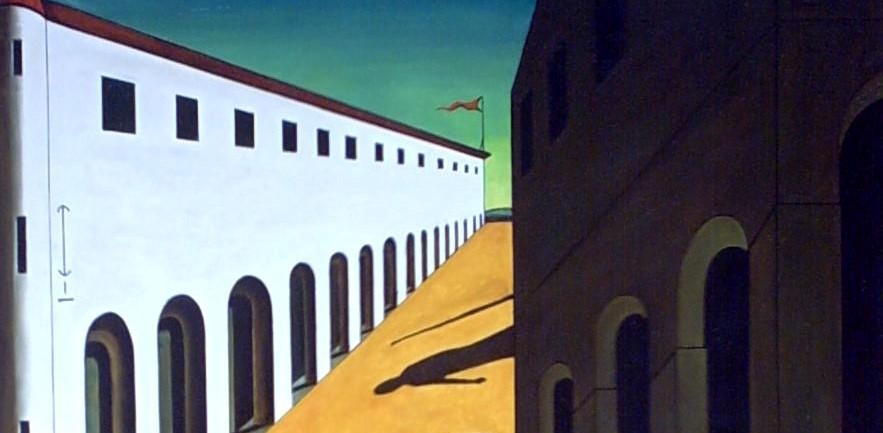
The existential horror of solitude. The dread and horror of war, The War, any war. All are displayed here, experienced by the viewer in real time as the protagonist experiences them. As Schofield continues on his journey, the color palette changes again and again and again, from yellow to orange to blue.
At one point, Schofield falls into a river, ending up floating in a pool laden with cherry blossoms, creating a scene that is clearly a sort of genderswapped Lady of Shalott or Ophelia:
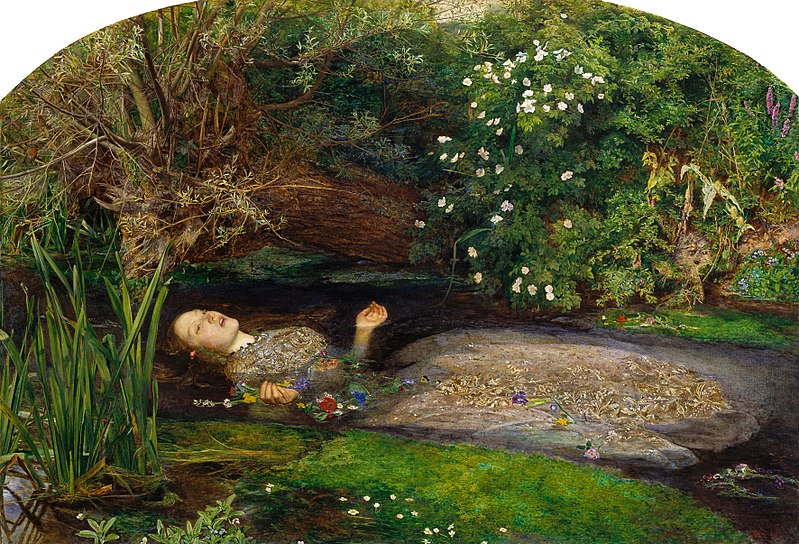
At long last, Schofield finds the 2nd, only to realize that they are already in the process of going over the top. In his efforts to reach Colonel MacKenzie with his letter calling off the attack, Schofield, gripped with the madness of obsession, runs across No Man’s Land as the shells fall around him, perpendicular to the line of battle, knocking over his comrades and nearly getting killed over and over again. He reaches his goal, delivers his message, and while he is too late to save the first wave of men cut down by German machine guns, he does manage to convince Mackenzie (played by an particularly intense and mustachioed Benedict Cumberbatch) to call off the attack. In the aftermath, he locates Blake’s brother, played by none other than Game of Thrones’ Richard Madden (the irony of a Stark playing the brother of a Baratheon will not be lost on fans of the series) and delivers the news of Blake’s death. “I am so glad you were with him,” Madden says, as he shakes Schofield’s hand and tries and fails to prevent the tears from falling.
At the end, we discover that Schofield has a wife and child at home, whose picture he regards lovingly as he finally gets a few moments of rest beneath a twisted tree, still standing despite the bombardment and destruction all around.
In a last response to the critics, I have this to say. Yes, it was technically perfect. But this movie also had soul. This was a film that portrayed the horrors and the despair of the Great War realistically, that depicted soldiers who were anything but gung-ho, soldiers who questioned where they were and what they were doing. It could not have been set at any other time than 1917, when the German “retreat” freed up more land than the Allies had been able to recapture since August of 1914. The date displayed at the beginning of the movie is no coincidence either: April 6, 1917 is the day the United States entered the war. In its last moments, the film depicts a figure at rest, able to finally hope, to consider a future. This reflects the actual attitudes and emotions felt by the beleaguered British and French who had fought themselves into exhaustion and madness in the three years prior.
1917 is a masterpiece. It is the Great War movie that everyone can love. If the theater we viewed it in was any indication—it was so crowded I couldn’t even sit with my family—it is reaching people. 1917 has accomplished what so many other films and television series produced over the last six years could not: it has engaged the general public with WWI. Mendes’ triumph is thus not just one of aesthetics or skill or “polish”; it is a triumph of thought. If only we could have a film like this every year, the world might well reconsider its addiction to war.
